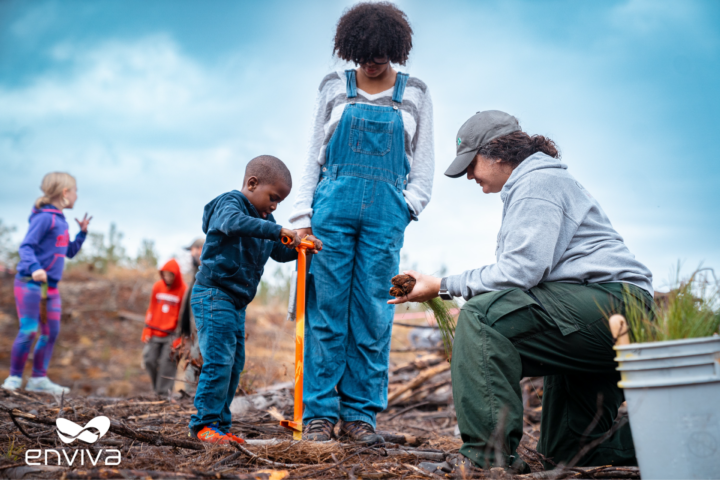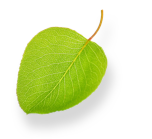Enviva Celebrates Hoke Community Forest Restoration Project with the Planting of Longleaf Pine in North Carolina
Environmental associations, companies, and organizations alike partner with Hoke County, North Carolina residents to restore more than 500 acres of land back to longleaf pine
BETHESDA, Md. – December 9, 2022 – Enviva (NYSE: EVA), the world’s leading producer of sustainably sourced woody biomass, partnered with the Sandhills Prescribed Burn Association and Milliken Advisors to sustainably thin the loblolly pine on over 500 acres of Hoke Community Forest in preparation for the establishment of a longleaf pine savanna. On Saturday, December 3, 2022, more than 15 organizations and 100 community residents gathered to plant the first longleaf pine seedlings as the project officially enters its second phase of restoration.

Longleaf Pine Tree Planting in Hoke Community Forest
The large parcel of land, known as “Hoke Community Forest,” is one of a few community forests in the U.S. Southeast. This unique piece of land is dedicated to and managed for conservation, environmental education, and economic welfare. Hoke Community Forest is owned by Hoke County and is managed for the financial benefit and recreational use of the citizens of Hoke County. The community forest is situated in a county with a large minority population and has previously been in economic distress due to manufacturing job losses and agricultural downturns, leaving the county to primarily survive on property taxes alone. To generate future revenue for the project, additional timber harvests will take place and will be done sustainably following the longleaf pine restoration plan developed by Milliken Advisors. The income garnered from logging and tourism makes Hoke Community Forest a valuable economic asset to the residents and officials of Hoke County.
“This type of partnership between federal and state agencies, NGOs and private industry, holds great promise to create intergenerational wealth for the rural families who own the vast majority of the longleaf forest,” said Jesse Wimberley, coordinator of the Sandhills Prescribed Burn Association. “Sustainable forestry can also strengthen rural economies that have been adversely affected by the loss of traditional agriculture and industry in the U.S. Southeast.”
“Projects like Hoke Community Forest showcase how biomass, responsibly sourced by company’s like Enviva, can play a major role in restoring longleaf pine savannas, one of the most biodiverse ecosystems in North America,” said Donald Grant, Manager of Sustainability Standards at Enviva. “Healthy, growing forests are integral to the livelihood of Southern families and landscapes as it provides additional income for the local economy. At Enviva, we are proud to play a role in supporting both.”
Phase one of the restoration project commenced when the Sandhills Prescribed Burn Association engaged with Enviva, which sources low-value wood in the U.S. Southeast from forest stands used in the production of wood pellets. Both forest thinnings and prescribed burns are standard techniques used to reduce fire risk, restore more natural forest structures, and reduce stress and agricultural competition in forested areas susceptible to insect and disease. Enviva remains committed to protecting the forest landscape and supporting forest management and growth within its operational footprint, and therefore participates in a wide variety of conservation-minded partners in both the public and the private sectors.
The Hoke Community Forest Restoration Project serves as an archetype of the type of restoration projects Enviva engages with and supports, as is Enviva’s five-year partnership with The Longleaf Alliance which assists with the implementation of Enviva’s longleaf forest restoration plan and serves as a critical step in the longleaf restoration process across North Carolina. One of the main conservation goals of Hoke Community Forest is to conserve the rare Sandhill ecosystem which is home to the endangered Red-Cockaded woodpecker (Leuconotopicus borealis) and longleaf pine (Pinus palustris) forests.
“Longleaf pine ecosystems provide a wealth of benefits – from forest products, to biodiversity, to ecosystem services – that can make direct economic, environmental, and cultural impacts on all communities that are found with the longleaf range,” said Carol Denhof, President of The Longleaf Alliance. “One of our goals with The Longleaf Alliance and also the ‘Longleaf for All’ working group of America’s Longleaf Restoration Initiative is to make sure everyone is given the opportunity to experience all the many things that make longleaf special. The Hoke Community Forest is an incredible resource for the people of Hoke County and by restoring it to a longleaf pine savanna, they will be shaping a forest that will be enjoyed for generations to come.”
Once officially onboard, Enviva engaged with Milliken Advisors Inc., a full-service land management company, to develop a harvesting plan, manage the timber sale, and oversee the harvesting activities on behalf of Hoke Community Forest. Over time the loblolly pine overstory will be removed leaving a longleaf pine savannah in its place for generations to come.
“This project is unique because our mission was threefold, we’re working to generate income for the county, restore longleaf pine, and obtain community involvement for this special project,” said Rob Drummond, Registered Forester at Milliken Advisors. “Saturday’s event was a huge success and a great day for youth education and the community and county at large.”
Now in phase two of the project, The Sandhills Prescribed Burn Association, Enviva, Milliken Advisors, and The Longleaf Alliance, along with other partners and the community will continue to assist in the development of the community forest by providing a mechanism to acquire, manage, and distribute funds, as well as oversee that the silvicultural and forest management practices are appropriately carried out by all partners. In addition to the initial partners outlined above, Saturday’s planting event included members from notable, local groups, such as North Carolina State University, Duke University, U.S. Forest Service, Natural Resource Conservation Service, Hoke County Manager, Commissioners and Staff, Hoke County Sheriff’s Office, Great Woods Companies, the Lumbee Tribe of North Carolina, Southern Fire Exchange, the Boy Scouts of America, the Girl Scouts of America, and the Regional 4-H Group for Hoke County, to name a few.
To view testimonials from several organizations that participated in this project, we invite you to watch this video.
About Enviva
Enviva Inc. (NYSE: EVA) is the world’s largest producer of wood pellets, a renewable and sustainable energy source produced by aggregating a natural resource, wood fiber, and processing it into a transportable form, wood pellets. Enviva owns and operates ten plants with a combined production capacity of approximately 6.2 million metric tons per year in Virginia, North Carolina, South Carolina, Georgia, Florida, and Mississippi, and is constructing its 11th plant in Epes, Alabama. Enviva is planning to commence construction of its 12th plant, near Bond, Mississippi, in early 2023. Enviva sells most of its wood pellets through long-term, take-or-pay off-take contracts with primarily creditworthy customers in the United Kingdom, the European Union, and Japan, helping to accelerate the energy transition and to decarbonize hard-to-abate sectors like steel, cement, lime, chemicals, and aviation fuels. Enviva exports its wood pellets to global markets through its deep-water marine terminals at the Port of Chesapeake, Virginia, the Port of Wilmington, North Carolina, and the Port of Pascagoula, Mississippi, and from third-party deep-water marine terminals in Savannah, Georgia, Mobile, Alabama, and Panama City, Florida.
To learn more about Enviva, please visit our website at www.envivabiomass.com. Follow Enviva on social media @Enviva.
